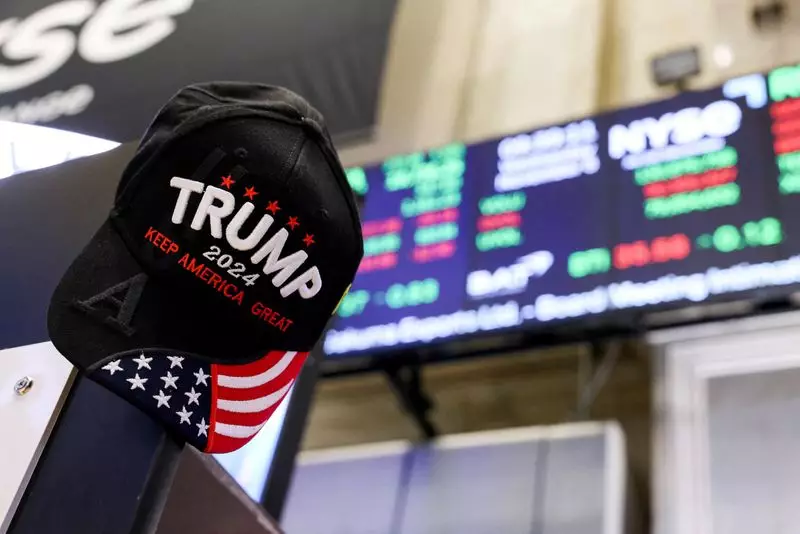On a seemingly ordinary Friday, U.S. stock index futures exhibited a muted performance as Wall Street’s primary indexes approached a commendable second consecutive week of appreciation. This week in the financial markets has been overshadowed by a pervasive uncertainty surrounding the trade policies of President Donald Trump. In particular, market participants are adjusting their strategies in light of ongoing discussions about potential tariffs, which have emerged as a focal point for both investors and analysts.
Throughout the week, Trump has reiterated the significance of tariffs on various trade partners, including China, Mexico, Canada, and the European Union. Despite his numerous mentions, a definitive outline of the proposed surcharges remains absent, leaving investors with more questions than answers. With the possibility of tariffs being announced as early as February 1 and concrete plans potentially forthcoming on April 1, a certain level of anxiety continues to grip market participants. Many analysts have warned that the implementation of tariffs could ignite a global trade war, induce inflationary pressures, and impede the Federal Reserve’s ability to cut interest rates.
In assessing the potential economic landscape, Mark Haefele, UBS’s chief investment officer, articulated concerns regarding the escalation of tariffs, particularly emphasizing a significant increase in the effective tariff rate on China. The uncertainty surrounding how these policies will unfold presents a precarious balancing act for investors, who are simultaneously weighing the benefits of potential economic growth against the risks inherent in escalating trade tensions.
As investors braced for the impact of tariffs, premarket trading on Friday reflected a cautious approach, with Dow E-minis indicating a drop of 98 points. This hesitancy came on the heels of a record-setting close for the S&P 500 the previous day. The index had been buoyed by remarks made by Trump at the World Economic Forum, where he expressed the need for tax reductions and lower oil prices. Yet, amidst these positive sentiments, specific company performances, such as Boeing’s announcement of a substantial fourth-quarter loss and the disappointing profit forecast from Texas Instruments, suggested underlying challenges.
The North Star in this economic fog remains upcoming economic indicators. Later in the day, traders will look toward a private survey assessing manufacturing and services activity as well as the University of Michigan’s consumer sentiment estimate. These reports are expected to provide critical insights into the health of the economy as market participants brace themselves for the implications of trade policies.
The earnings season is contributing to the prevailing atmosphere of caution, as corporations are revealing mixed results. American Express reported a notable 12% increase in its fourth-quarter profit; however, its shares dipped 2.6%. Similarly, telecommunications giant Verizon faced a decline after projecting annual free cash flow and adjusted profits below analysts’ expectations. As reports from other tech behemoths are on the horizon, including Microsoft, Meta, Apple, and Tesla, the anticipation surrounding earnings will likely influence investor sentiment as valuations hang in the balance.
Moreover, surprisingly, U.S.-listed shares of several Chinese companies saw an upswing after Trump suggested that tariffs against China could potentially be avoided. This remark appears to have reinvigorated investor confidence in affected tech stocks, indicating the fragility of market reactions to geopolitical updates.
As markets prepare for the long-term implications of potential tariffs and ongoing trade deliberations, there is a sense of cautious optimism stemming from the second consecutive week of market gains. The intertwined relationship between U.S. economic health, Federal Reserve policy, and global trade dynamics will remain a critical focus in the coming weeks. Investors are left to monitor evolving narratives, searching for signals that could guide their next moves in a complex and fluid economic landscape. The interplay of these elements will determine not just market trajectories, but also the broader economic environment in the months to come.

